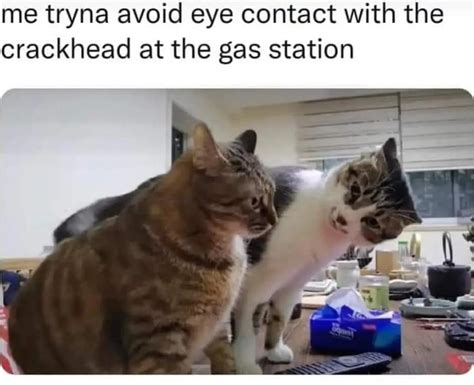
Nurses across the country are sharing unsettling experiences encountered just before patients’ deaths, reporting phenomena ranging from unexplained sounds and visions to dramatic changes in vital signs despite no apparent medical cause. These accounts, though unscientific, offer a glimpse into the often-unseen aspects of end-of-life care and spark conversations about the potential for unexplained events in the face of mortality.
Many nurses have recounted eerie occurrences that defy conventional explanation, happening moments or hours before a patient’s death. These experiences are not presented as scientific fact but rather as anecdotal observations from seasoned medical professionals working in intensely emotional environments. One nurse, identified as Tiffany, described a patient’s room filling with the scent of roses despite no flowers being present. “There were no flowers in the room. The patient was declining and unresponsive. Ten minutes later, the patient passed,” she said. Such occurrences, while rare, are common enough to warrant discussions among healthcare workers.
Another nurse, Susan, shared her experience of witnessing vital signs improve dramatically just before death, a phenomenon sometimes referred to as “the rally.” She stated, “I have seen patients who were actively dying, like, unresponsive, change their vital signs and become completely alert and oriented and start talking.” This surge of energy and awareness, followed shortly by death, is a perplexing experience for healthcare professionals who witness it.
Nurses often build close relationships with their patients, especially during end-of-life care, making these experiences profoundly impactful. The emotional weight of caring for dying patients can amplify sensitivity to perceived paranormal events or create heightened awareness of subtle changes in the patient’s condition. The stress and exhaustion inherent in nursing can also play a role in the interpretation of these events.
The stories shared by nurses also include instances of unexplained noises, such as call lights activating without anyone pressing them or the distinct sound of someone calling a patient’s name when no one is present. One nurse recounted the experience of a patient claiming to see deceased relatives waiting for them. While these experiences can be unsettling, nurses often approach them with empathy and understanding, recognizing the vulnerability of patients nearing the end of their lives.
While there’s no scientific consensus supporting these claims, the consistency of these accounts among various nurses suggests a shared experience worth exploring. These stories often become part of nursing folklore, passed down through generations of caregivers, reinforcing the idea that there are aspects of death that remain beyond scientific understanding. This isn’t to suggest the supernatural exists, but to acknowledge that human perception can be significantly altered during moments of intense stress, grief, and proximity to death.
The act of sharing these experiences also serves as a coping mechanism for nurses dealing with the emotional toll of their work. Discussing unsettling events within a supportive community allows nurses to process their feelings and find comfort in shared experiences. These narratives can also lead to deeper conversations about the nature of death, spirituality, and the limits of medical science.
Skeptics often point to alternative explanations for these experiences, such as sensory illusions, sleep deprivation, and the power of suggestion. The human brain is prone to misinterpreting sensory information, especially in environments with low lighting or unusual sounds. Fatigue and stress can also impair cognitive function, leading to hallucinations or distorted perceptions. Furthermore, the expectation of encountering paranormal phenomena can influence how nurses interpret ambiguous events.
Despite the lack of scientific evidence, these accounts highlight the importance of providing holistic care that addresses the emotional and spiritual needs of patients nearing death. Nurses are often on the front lines of providing comfort and support during this vulnerable time, and their experiences offer valuable insights into the multifaceted nature of end-of-life care. By acknowledging the potential for unexplained phenomena, nurses can create a more supportive and compassionate environment for both patients and their families.
The sharing of these “spooky” experiences underscores the complex relationship between the scientific and the subjective within healthcare. While nurses are trained to rely on evidence-based practices, they also encounter situations that defy easy explanation. These moments challenge their understanding of the world and force them to confront the limitations of their knowledge. The willingness to share these stories demonstrates the human side of nursing and the profound impact that caring for the dying can have on those who provide the care.
The prevalence of these narratives also speaks to the enduring human fascination with the mysteries of death and the afterlife. Throughout history, cultures have developed beliefs and rituals surrounding death, reflecting a universal desire to understand what happens after we die. The stories shared by nurses tap into this deep-seated curiosity and offer a glimpse into the unknown, even if those glimpses are filtered through the lens of personal experience and interpretation.
Ultimately, the “spooky” experiences shared by nurses serve as a reminder that death is not simply a biological event but also a deeply personal and spiritual one. By listening to and acknowledging these stories, we can gain a greater appreciation for the complexities of end-of-life care and the profound impact that nurses have on the lives of their patients. These narratives also highlight the importance of creating space for conversations about death and dying, allowing individuals to express their fears, hopes, and beliefs in a supportive and compassionate environment.
The stories, while unconfirmed and anecdotal, add depth to the human experience of death, and the nursing profession.
Frequently Asked Questions (FAQs)
1. What kind of “spooky” experiences are nurses reporting before patients die?
Nurses report a variety of unsettling experiences occurring just before a patient’s death. These include:
- Unexplained sensory phenomena: Reports of unusual smells (like roses when none are present), unexplained sounds (call lights activating without anyone pressing them, voices calling a patient’s name), and visual disturbances (seeing shadows or figures).
- Sudden changes in patient condition: Instances of patients who were previously unresponsive suddenly becoming alert and talkative, sometimes referred to as “the rally,” before passing away shortly after.
- Patient visions: Accounts of patients claiming to see deceased relatives or other figures waiting for them.
- Equipment malfunctions: Unexplained issues with medical equipment, such as monitors displaying unusual readings or failing altogether.
2. Is there any scientific explanation for these experiences?
While many nurses report similar experiences, there is no scientific consensus explaining them. Several potential explanations are often offered:
- Sensory illusions: Stress, fatigue, and low lighting can contribute to misinterpretations of sensory information, leading to perceived paranormal events.
- Sleep deprivation: The demanding nature of nursing work often leads to sleep deprivation, which can impair cognitive function and cause hallucinations.
- The power of suggestion: The expectation of encountering paranormal phenomena can influence how nurses interpret ambiguous events.
- Medical explanations: Some changes in vital signs or behavior could be attributed to undiagnosed medical conditions or the body’s response to the dying process. “The rally” for instance, has been attributed to a final surge of hormones.
3. Are these experiences common among nurses?
While not every nurse experiences these phenomena, the recurring nature of these stories suggests they are not uncommon. Many nurses share these experiences with colleagues, and they often become part of nursing folklore, passed down through generations of caregivers. The frequency of these accounts indicates a shared experience that warrants further exploration, even if it remains unscientific.
4. How do nurses cope with these unsettling experiences?
Nurses cope with these experiences in various ways:
- Sharing stories: Discussing unsettling events with colleagues provides a sense of validation and support.
- Seeking emotional support: Some nurses seek counseling or therapy to process their feelings and manage the emotional toll of their work.
- Finding meaning: Some nurses find comfort in believing that these experiences have a spiritual significance, offering a glimpse into the mysteries of death and the afterlife.
- Maintaining a healthy work-life balance: Prioritizing self-care, such as getting enough sleep and engaging in relaxing activities, can help nurses manage stress and prevent burnout.
5. What is the importance of acknowledging these experiences in the context of end-of-life care?
Acknowledging these experiences, even without scientific proof, is important for several reasons:
- Validating nurses’ experiences: Recognizing that these experiences are common and can be unsettling validates nurses’ feelings and encourages them to share their stories without fear of judgment.
- Promoting holistic care: Acknowledging the potential for unexplained phenomena encourages nurses to provide holistic care that addresses the emotional and spiritual needs of patients nearing death.
- Creating a compassionate environment: By creating space for conversations about death and dying, nurses can foster a more supportive and compassionate environment for both patients and their families.
- Encouraging further research: While these experiences may not be scientifically explainable, they highlight the need for further research into the complexities of death and the human experience of mortality.
- Improving communication: Sharing these experiences can open lines of communication with patients and their families, providing opportunities to discuss fears, hopes, and beliefs about death and the afterlife.
Expanded and In-Depth Coverage:
The narratives shared by nurses offer a unique perspective on the intersection of healthcare and the human experience, particularly in the context of end-of-life care. These stories, while anecdotal and lacking scientific validation, possess a powerful resonance, prompting reflection on the mysteries surrounding death and the potential for unexplained phenomena. It is crucial to examine the various facets of these accounts, including the psychological and sociological contexts in which they arise, the potential explanations beyond the supernatural, and the implications for patient care and the nursing profession.
The Psychological Context:
The environment in which nurses work is inherently stressful and emotionally charged. They are frequently exposed to human suffering, witnessing firsthand the physical and emotional decline of their patients. This constant exposure to mortality can heighten their sensitivity to subtle changes in a patient’s condition and create a heightened awareness of the atmosphere surrounding death.
Furthermore, the close relationships that nurses often develop with their patients, especially during end-of-life care, can amplify the emotional impact of these experiences. The grief and empathy they feel for their patients can make them more susceptible to interpreting ambiguous sensory information as paranormal events. The stress and exhaustion inherent in nursing can also impair cognitive function, leading to hallucinations or distorted perceptions.
The psychological concept of “confirmation bias” might also play a role. If a nurse believes in the possibility of paranormal events, they might be more likely to notice and remember experiences that seem to support that belief, while dismissing or forgetting experiences that do not. This selective attention can create a skewed perception of reality.
The Sociological Context:
The sharing of these experiences among nurses creates a sense of community and shared understanding. These narratives become part of nursing folklore, passed down through generations of caregivers, reinforcing the idea that there are aspects of death that remain beyond scientific understanding. This shared belief system can provide comfort and support to nurses who are grappling with the emotional toll of their work.
Moreover, the cultural beliefs surrounding death and the afterlife can influence how nurses interpret these experiences. In cultures that believe in spirits or the continuation of consciousness after death, nurses might be more likely to attribute unexplained events to supernatural causes. Conversely, in cultures that emphasize scientific materialism, nurses might be more likely to seek rational explanations for these experiences.
The power of social suggestion should not be underestimated. If a nurse hears stories of “spooky” experiences from colleagues, they might be more likely to perceive similar events in their own work environment. This can create a self-fulfilling prophecy, where the expectation of encountering paranormal phenomena influences how nurses interpret ambiguous events.
Potential Explanations Beyond the Supernatural:
While some nurses attribute these experiences to paranormal causes, it is important to consider alternative explanations based on scientific principles.
- Sensory deprivation: Patients who are bedridden and receiving palliative care often experience sensory deprivation, which can lead to hallucinations or distorted perceptions.
- Medication side effects: Many medications used in end-of-life care can have side effects that affect cognitive function and perception, such as confusion, hallucinations, or delirium.
- Electromagnetic fields: Some researchers have proposed that fluctuations in electromagnetic fields can affect brain activity and cause hallucinations or other unusual experiences.
- Carbon monoxide poisoning: In rare cases, unexplained sensory phenomena could be attributed to carbon monoxide poisoning, which can cause hallucinations, dizziness, and other symptoms. This is particularly relevant when dealing with older buildings or faulty equipment.
- The “rally” phenomenon: The sudden surge of energy and awareness that some patients experience before death, known as “the rally,” is a perplexing phenomenon that has been attributed to a final release of hormones or other physiological changes. However, the exact mechanisms behind this phenomenon remain unclear. This surge doesn’t necessarily indicate a paranormal event but is a biological function that is not fully understood.
- Auditory and Visual Hallucinations: Terminal patients could be experiencing auditory or visual hallucinations as their organs fail. These can be caused by the buildup of toxins in the body, especially the brain.
Implications for Patient Care:
Regardless of the underlying cause, these experiences highlight the importance of providing holistic care that addresses the emotional and spiritual needs of patients nearing death. Nurses are often on the front lines of providing comfort and support during this vulnerable time, and their experiences offer valuable insights into the multifaceted nature of end-of-life care.
- Creating a supportive environment: Nurses should create a safe and supportive environment where patients feel comfortable expressing their fears, hopes, and beliefs about death and the afterlife.
- Active listening: Nurses should actively listen to patients who are experiencing unusual sensory phenomena or visions, without dismissing their experiences as hallucinations or delusions.
- Spiritual care: Nurses should collaborate with chaplains or other spiritual advisors to provide spiritual care to patients who desire it.
- Pain management: Effective pain management can improve patients’ comfort and reduce the likelihood of delirium or other cognitive impairments that could contribute to unusual sensory experiences.
- Family support: Nurses should provide support and education to family members who are witnessing these experiences, helping them understand the potential explanations and cope with their own emotions.
- Environmental Assessment: In instances of potential auditory or visual hallucinations, nurses need to asses if the environment is comforting and safe, ensuring the patient has a calm experience.
Implications for the Nursing Profession:
The sharing of these experiences underscores the complex relationship between the scientific and the subjective within healthcare. While nurses are trained to rely on evidence-based practices, they also encounter situations that defy easy explanation. These moments challenge their understanding of the world and force them to confront the limitations of their knowledge.
- Continuing education: Nursing schools should provide continuing education on end-of-life care, including information on the psychological and spiritual aspects of death and the potential for unexplained phenomena.
- Stress management: Healthcare organizations should provide resources for nurses to manage stress and prevent burnout, which can contribute to impaired cognitive function and distorted perceptions.
- Open communication: Healthcare organizations should foster a culture of open communication where nurses feel comfortable sharing their experiences without fear of judgment.
- Research: Further research is needed to investigate the psychological and physiological factors that contribute to these experiences, as well as the potential for alternative explanations beyond the supernatural.
- Promoting Empathetic Care: Encourage the nurses to have empathetic care by listening to the patients and ensure they are comfortable, regardless of their situation. This can lead to a better outcome during end-of-life events.
- Encouraging Healthy Coping Mechanisms: Nurses should be encouraged to develop healthy coping mechanisms to manage their personal feelings.
In conclusion, the “spooky” experiences shared by nurses offer a glimpse into the often-unseen aspects of end-of-life care. While these experiences may not be scientifically explainable, they highlight the importance of providing holistic care that addresses the emotional and spiritual needs of patients nearing death. By acknowledging these stories and fostering open communication, we can create a more supportive and compassionate environment for both patients and those who provide their care. The narratives serve as a reminder that death is not simply a biological event but also a deeply personal and spiritual one. It is crucial to approach these narratives with both skepticism and empathy, recognizing the potential for both scientific explanations and the enduring mysteries surrounding the human experience of mortality. It is by exploring this intersection that we can further deepen our understanding of death and dying, and better equip nurses to provide care that is not only technically proficient, but also profoundly human. It is important for the nursing profession to be open to these experiences as they are happening with patients, as this promotes better patient-centered care for those who are passing. While the nurses themselves might not have answers as to why patients behave this way, it can increase quality of life to hear their fears and opinions, which in turn leads to higher quality of care, patient satisfaction and professional fulfillment.









